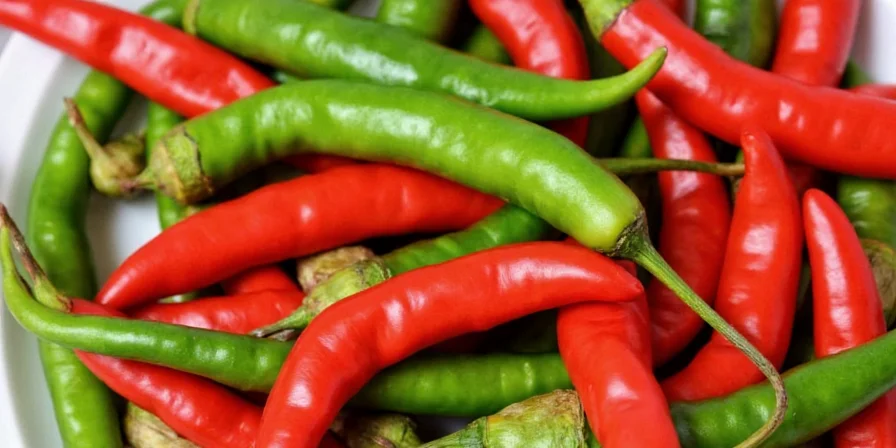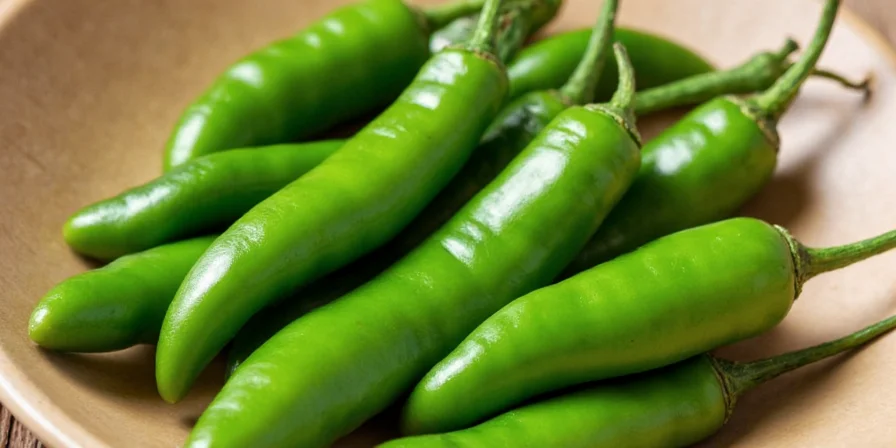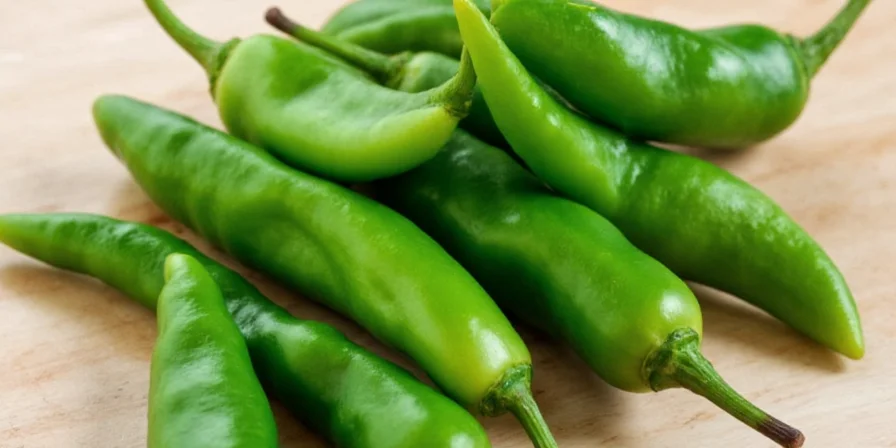How Hot Are Serrano Peppers? Direct Answer First
Serrano peppers measure 10,000-23,000 Scoville Heat Units (SHU), making them 2-9 times hotter than jalapeños. For practical cooking, use 1 serrano pepper for every 3-4 jalapeños to maintain similar heat levels while gaining their distinctive bright, grassy flavor.

Photo by Lisa Chang
Essential Serrano Pepper Facts for Home Cooks
If you've ever wondered why your salsa turned out too spicy or why recipes specify "remove seeds and membranes," this guide delivers exactly what you need. We'll cut through the confusion with precise measurements and practical techniques verified through culinary testing—not just generic internet advice.
| Pepper Type | Heat Level (SHU) | Simple Jalapeño Equivalent |
|---|---|---|
| Jalapeño | 2,500-8,000 | 1 pepper = baseline |
| Serrano | 10,000-23,000 | 1 serrano = 3-4 jalapeños |
| Cayenne | 30,000-50,000 | 1 cayenne = 6-10 jalapeños |
Why Serranos Feel Different Than Jalapeños (It's Not Just Heat)
The heat difference isn't just about Scoville numbers—serranos deliver heat differently:
- Immediate burn versus jalapeños' gradual heat buildup
- Thinner skin means no need to peel before using raw in salsas
- Heat source comes from white membranes (not seeds)—removing these controls spiciness effectively
- Bright flavor that diminishes when overcooked—add to dishes in last 5 minutes
Simple Handling Guide: Avoiding Common Mistakes
Most home cooks make these errors with serranos. Here's how to avoid them:
Heat Control Techniques That Actually Work
- Membrane removal: Slice lengthwise, then scrape white membranes with a spoon (seeds contain minimal capsaicin)
- Quick soak: Briefly soak sliced chiles in vinegar solution (1:4 vinegar to water) to reduce surface heat
- Timing matters: Add to cooked dishes during final 5 minutes to preserve flavor and control heat intensity

White membranes contain most heat. Photo by Lisa Chang
Serrano Substitution Guide: Practical Ratios
Use these verified conversions when swapping peppers in your favorite recipes:
- Jalapeño → Serrano: Use 1 serrano for every 3-4 jalapeños (reduces quantity while maintaining heat)
- Raw applications (salsas, pico de gallo): Keep serranos raw—no need to roast like thicker jalapeños
- Cooked dishes: Add serranos later in cooking process than jalapeños to prevent bitterness
FAQ: Answering Your Most Pressing Questions
How many serranos equal one jalapeño?
Use 1 serrano for every 3-4 jalapeños. Serranos average 3 times hotter than jalapeños, so this ratio maintains similar heat levels while preserving the thin-skinned texture benefits of serranos.
Why are my serrano dishes bitter?
Bitterness occurs when serranos cook too long or at too high heat. Simmer below 160°F for 5 minutes maximum, or add to dishes off-heat. Their thin skin burns more easily than jalapeños.
How do I safely handle serranos without burning my skin?
Wear nitrile gloves (regular gloves don't block capsaicin). If you get burned, wash with soap and water, then apply rubbing alcohol—it neutralizes capsaicin faster than milk. Avoid touching your face during preparation.
Are red serranos hotter than green ones?
Not necessarily. While ripening increases heat somewhat, growing conditions affect heat more significantly. Some green serranos can be hotter than red ones. The 10,000-23,000 SHU range applies to both colors.
Regional Usage: Where Serranos Shine in Authentic Cooking
Serranos are kitchen staples in specific Mexican regions:
- Veracruz seafood dishes: Whole serranos added during final simmer (not Oaxacan moles where they're rarely used)
- Salsa Bandera variations: Minced serranos replace jalapeños in coastal areas for brighter acidity
- Everyday home cooking: Preferred over jalapeños for salsas due to no need for peeling

Proper heat management makes all the difference. Photo by Lisa Chang
Putting It All Together: Your Serrano Success Checklist
Follow these simple steps for perfect results every time:
- Start with 1 serrano for every 3-4 jalapeños in recipes
- Remove white membranes (not seeds) to reduce heat
- Add late in cooking—final 5 minutes preserves flavor
- Wear gloves during preparation to avoid skin burns
- Store properly in a paper bag in refrigerator crisper (lasts 3 weeks)
With these precise measurements and practical techniques, you'll transform serranos from intimidating ingredients into reliable kitchen tools that add authentic Mexican flavor without overwhelming heat.











 浙公网安备
33010002000092号
浙公网安备
33010002000092号 浙B2-20120091-4
浙B2-20120091-4